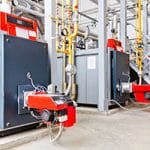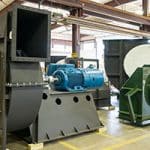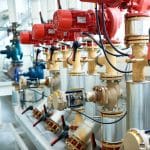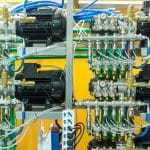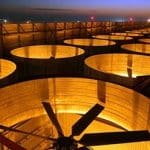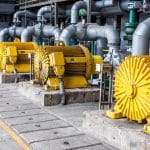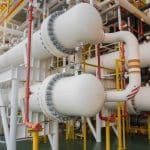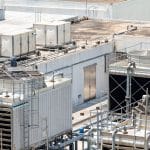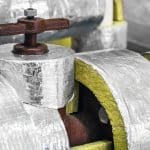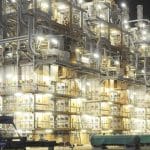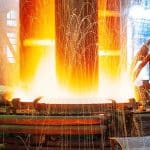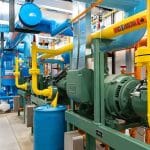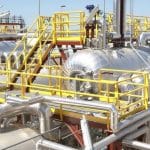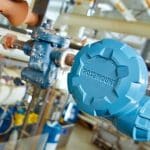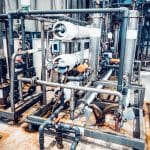The 3 kEys
- Adjusting steam pressure to the minimum required level, while maintaining the desired evaporation rate, can substantially reduce energy usage.
- Excessive temperatures beyond what is necessary for effective evaporation result in wasted energy.
- Simple adjustments such as redirecting hot condensate for preheating feedwater can reduce the energy required to bring incoming fluid to the target temperature.
Industrial evaporators are critical to many manufacturing processes, particularly in food processing, chemical production, and wastewater treatment. But in that they consume substantial amounts of energy to remove water and concentrate solutions, they are a prime opportunity for energy efficiency improvements.
By focusing on process optimization, routine maintenance, and operational adjustments, substantial energy savings can be achieved while improving system performance.
Optimizing Operating Conditions for Maximum Efficiency
Fine-tuning operating parameters is a straightforward approach to enhance evaporator efficiency. Operating systems at unnecessarily high temperatures or pressures can lead to excessive energy consumption. Adjusting steam pressure to the minimum required level, while maintaining the desired evaporation rate, can substantially reduce energy usage. Similarly, aligning feed flow rates and concentrations with actual process requirements, rather than relying on outdated configurations, prevents energy waste.
Ensuring an optimal temperature differential between the heating medium and the product is crucial. This involves maintaining clean heat transfer surfaces, reducing scaling, and ensuring proper condensate return. Excessive temperatures beyond what is necessary for effective evaporation result in wasted energy.
The Importance of Heat Recovery and Waste Heat Utilization
Consider assessing the potential for heat recovery within the evaporator system. Many industrial evaporators release excess heat that can be captured and reused elsewhere in the process. Simple adjustments such as redirecting hot condensate for preheating feedwater can reduce the energy required to bring incoming fluid to the target temperature.
If the facility has multiple stages of evaporation, ensuring that each stage is properly balanced to maximize energy reuse can yield significant benefits. Multi-effect evaporators inherently offer better energy efficiency (but even single-effect systems can benefit from simple modifications that allow for better integration with other heat-consuming processes within the facility).
An example of optimizing operating conditions is demonstrated in a study on the energy optimization of a multiple-stage evaporator system using a water cycle algorithm. The research focused on a seven-stage evaporator configured in a backward feed flow, integrating various energy-saving strategies. By employing a novel metaheuristic approach, the study achieved optimal estimates of unknown process variables, leading to enhanced energy efficiency parameters.
Multi-Effect Evaporators
A Multiple Stage Evaporator, also known as a Multi-Effect Evaporator (MEE), is a system designed to improve energy efficiency by utilizing the heat from steam or vapor multiple times across several evaporation stages. Instead of using fresh steam for each stage of evaporation, the vapor generated in one stage is used to heat the next stage, significantly reducing the overall energy consumption.
PubMed Central has published an excellent paper called Energy optimization of Multiple Stage Evaporator Systems that you might want to read, as it explains the following in great detail:
In a multiple-stage evaporator, evaporation occurs in a series of vessels (or “effects”), each operating at a progressively lower pressure. The process generally follows these steps.
- Initial Heating and Evaporation: The first effect receives steam as a heating source, which causes the liquid (such as water in a process solution) to evaporate. This vapor is then captured instead of being released as waste.
- Heat Transfer to Next Stage: The vapor from the first effect is used as the heating source for the second effect, which operates at a lower pressure. Because of the lower pressure, the boiling point in the second effect is also lower, allowing efficient evaporation without additional steam input.
- Cascade of Heat Reuse: The process repeats across multiple stages, with each successive effect using the vapor from the previous stage. This cascading reuse of energy drastically reduces the need for fresh steam input.
- Final Condensation and Recovery: After passing through all the effects, the remaining vapor is condensed and either recycled as process water or used for other heating purposes within the plant.
There are 5 distinct benefits.
- Energy Efficiency: The re-use of vapor between effects reduces steam consumption, lowering energy costs significantly.
- Operational Cost Savings: Lower energy demand translates to reduced operational expenses and often justifies the investment in multi-effect systems.
- Smaller Steam Requirement: Compared to a single-effect evaporator, a multi-effect system requires considerably less steam input for the same amount of evaporation.
- Lower Environmental Impact: Reduced energy usage leads to lower greenhouse gas emissions, making these systems more environmentally friendly.
- Better Process Control: Multi-effect evaporators can maintain product quality by controlling temperature and pressure in each stage.
One real-world example of the benefits of multi-effect evaporation is its application in the dairy industry. Nestlé, a global food and beverage company, implemented a multi-effect evaporator system to concentrate milk while reducing energy consumption. By utilizing a six-effect evaporator, Nestlé was able to decrease steam usage by more than 50%, cutting down costs and reducing carbon emissions. This improvement not only enhanced process efficiency but also contributed to sustainability initiatives.
Leveraging Automation and Controls for Smarter Operation
Many evaporator systems operate on outdated control strategies that do not respond dynamically to changing production needs. Upgrading to more precise controls—such as modulating steam flow based on real-time demand—can eliminate excess energy use. Facilities Managers should work with operations teams to ensure that evaporators only run when needed and that they are operating at their optimal set points.
Even without investing in new control systems, simple procedural changes, such as ensuring that evaporators are shut down properly when not in use and reducing idle time, can result in measurable energy savings. Proper sequencing of multiple evaporators and adjusting loads to match production schedules can also improve efficiency.
The Big Finish
Enhancing the energy efficiency of industrial evaporators does not always require a large capital investment. By focusing on optimizing operating conditions, improving heat recovery, maintaining clean heat transfer surfaces, managing condensate effectively, and leveraging better controls, Facilities Managers can achieve substantial energy savings with little to no upfront cost. These improvements not only lower operational costs but also contribute to sustainability goals by reducing overall energy consumption and carbon emissions.
For deeper insights and practical examples, explore case studies such as those from the Department of Energy’s Better Plants Program, which highlight real-world energy efficiency measures implemented in industrial evaporation systems.
Resources from the Industrial Energy Efficiency Network also provide white papers and best practices that Facilities Managers can leverage to maximize evaporator performance.




